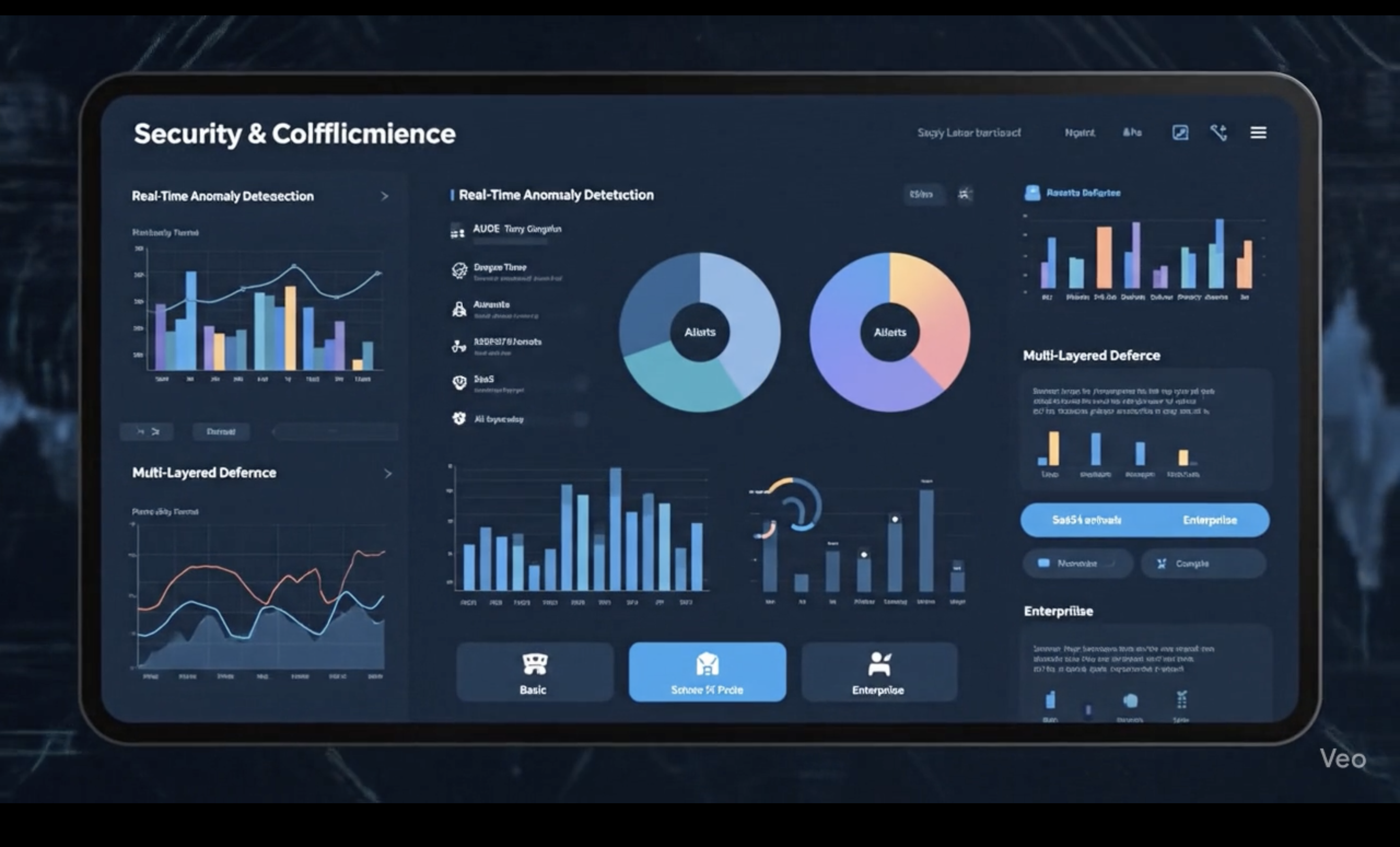Wavf transforms spoken language into automated enterprise workflows, secured by voice biometrics and continuous threat detection.

Modern enterprises are aggressively adopting workflow automation to enhance operational efficiency and reduce manual overhead. Simultaneously, voice-powered interfaces are becoming ubiquitous, promising a new era of frictionless human-computer interaction. While powerful in isolation, the convergence of these two trends has created a new and perilous attack surface that traditional security models are fundamentally ill-equipped to defend. The result is a tripartite crisis of identity, data, and trust that leaves organizations dangerously exposed.
First, enterprises face an Identity Crisis. Conventional authentication methods like passwords, PINs, and security questions have become dangerously obsolete. The rise of sophisticated, AI-driven attack tools has weaponized trust itself. Cybercriminals can now leverage deepfake technology to clone an executive's voice with startling accuracy, a technique that has already been used to perpetrate "CEO fraud" and authorize fraudulent wire transfers exceeding $35 million in a single heist. When an employee receives a phone call that sounds indistinguishable from their CEO, traditional security protocols are rendered useless, transforming a trusted colleague's voice into a potent vector for social engineering and corporate espionage.
Second, organizations are grappling with a Data Crisis. Voice data is uniquely sensitive and unstructured. Unlike typed input, natural conversation can inadvertently capture a vast amount of confidential information, including Personally Identifiable Information (PII), financial details, or protected health information (PHI). The "always-on" nature of many voice-enabled devices means that sensitive business conversations could be recorded, stored in the cloud, and exposed through misconfigured storage or third-party breaches. This creates a significant compliance risk under stringent data protection regulations like GDPR, HIPAA, and CCPA, which explicitly apply to voice data.
Third, these vulnerabilities culminate in a Trust Crisis. The "black box" nature of many AI systems, combined with the privacy implications of constantly listening microphones, fosters deep-seated skepticism among enterprise decision-makers. Without transparent, verifiable security mechanisms, businesses are hesitant to deploy voice automation for mission-critical processes. They cannot trust what they cannot see, control, and audit, which severely limits the adoption and potential of these transformative technologies.
Natural Language Workflow Engine: This core feature democratizes automation. It allows authorized users, regardless of technical expertise, to describe any business process in plain English. Wavf's advanced Natural Language Processing (NLP) engine then translates this human instruction into a robust, multi-step automated workflow, complete with integrations to common enterprise applications.
Biometric Identity Assurance: Wavf employs state-of-the-art voice biometric technology to create a unique, encrypted voiceprint for every user. This voiceprint serves as a digital key, ensuring that only the verifiably correct individual can trigger, modify, or approve sensitive workflows. This feature is designed to effectively neutralize the threat of impersonation, including sophisticated deepfake and replay attacks.
Semantic Anomaly Detection: Moving far beyond simple rule-based alerts, Wavf's AI-powered security engine continuously monitors workflows in real-time. It analyzes behavior not just for statistical outliers but for actions that are contextually or semantically illogical. For example, it can identify and flag a workflow that attempts to pay an invoice after it has already been marked as rejected, a logical contradiction that traditional systems would miss.
Unified Security & Compliance Dashboard: This feature provides a single pane of glass for administrators and security teams. It offers a real-time, intuitive visualization of all workflow activity, active security alerts, and user access patterns. The dashboard is designed to facilitate rapid investigation and response, and includes tools to generate audit-ready reports for regulations like GDPR and HIPAA.
The Wavf platform operates on a simple yet highly secure cycle of enrollment, creation, execution, and monitoring.
Enrollment: A new user is onboarded through a quick and frictionless process. By speaking a short passphrase, the system analyzes over 100 unique vocal characteristics—such as pitch, tone, and inflection—to generate a unique and heavily encrypted voiceprint. This process typically takes less than five seconds and establishes the foundation of the user's digital identity on the platform.
Creation: An authorized user, such as a department head or operations manager, initiates the workflow creation process. After authenticating with their voice, they simply describe the desired automation in natural language. For example, they might state: "When a new lead is added to Salesforce with a budget over $50,000, send a high-priority alert to the senior sales channel in Teams and assign a follow-up task to the account executive". Wavf's NLP engine parses this command, identifies the applications (Salesforce, Teams), entities (lead, budget), conditions, and actions, and visually maps out the workflow for confirmation.
Execution: The workflow is now live. When the trigger condition is met (e.g., the specified lead is created in Salesforce), Wavf automatically initiates the prescribed actions. If a workflow includes a manual gate, such as an expense report approval, the designated approver is notified. To complete their step, they must authenticate with their voice, ensuring an unbroken chain of verified identity throughout the process.
Monitoring: Every step of every workflow is continuously monitored by Wavf's anomaly detection engine. The engine analyzes the full context of the execution—the "who" (user), "what" (action), "when" (time), and "where" (location/IP)—against established baselines. More importantly, it performs semantic analysis to ensure the action aligns with the logical intent of the workflow. Any deviation, from a statistically unusual access time to a semantically contradictory action, is flagged in real-time on the security dashboard for immediate review and response. All actions are immutably logged, creating a complete and defensible audit trail.
Software engineering
Wavf will adopt a tiered Business-to-Business (B2B) Software-as-a-Service (SaaS) subscription model. This approach provides a predictable, recurring revenue stream that is essential for sustainable growth and continuous product development. The pricing structure is designed to be flexible, offering a low-friction entry point for smaller teams or departmental deployments, while scaling appropriately to capture the immense value delivered to large enterprise customers with complex security and compliance needs. The tiers will be differentiated based on a combination of user seats, workflow execution volume, and access to advanced, enterprise-grade features.